NEW DESKTOP LIGHTBOX TO INCREASE THE NUMBER OF VIDEO VIEWS.
why?
- Consistency.
- Help Customers discover information that meets their needs.
- Help Customers learn about products via video.
- Personalization.
- Control of Information.
The biggest problem consisted of the multiple access points that we were presented to users when viewing video media. The experience was different based on the location. In other words, users could reach a lightbox, with different look and feel from the following locations:
- Search results page.
- Product detail page.
- Video detail page.
- Video Shorts portal.
There were three different experiences when accessing the lightbox from any of those entry points. As a result, customers were rising arguments about the inconsistency of the experience.
FROM THE PRODUCT DETAIL PAGE
When accessing the lightbox from the product detail page, users were provided with the following components plus a different UX from the version mentioned before. On the detail page of an item, there are videos next to images to help customers to know about the product. Clicking on a video opens the following lightbox with these components:
- Modal.
- Related products.
- Related videos (Section title)
- Report content.
- Social media sharing.
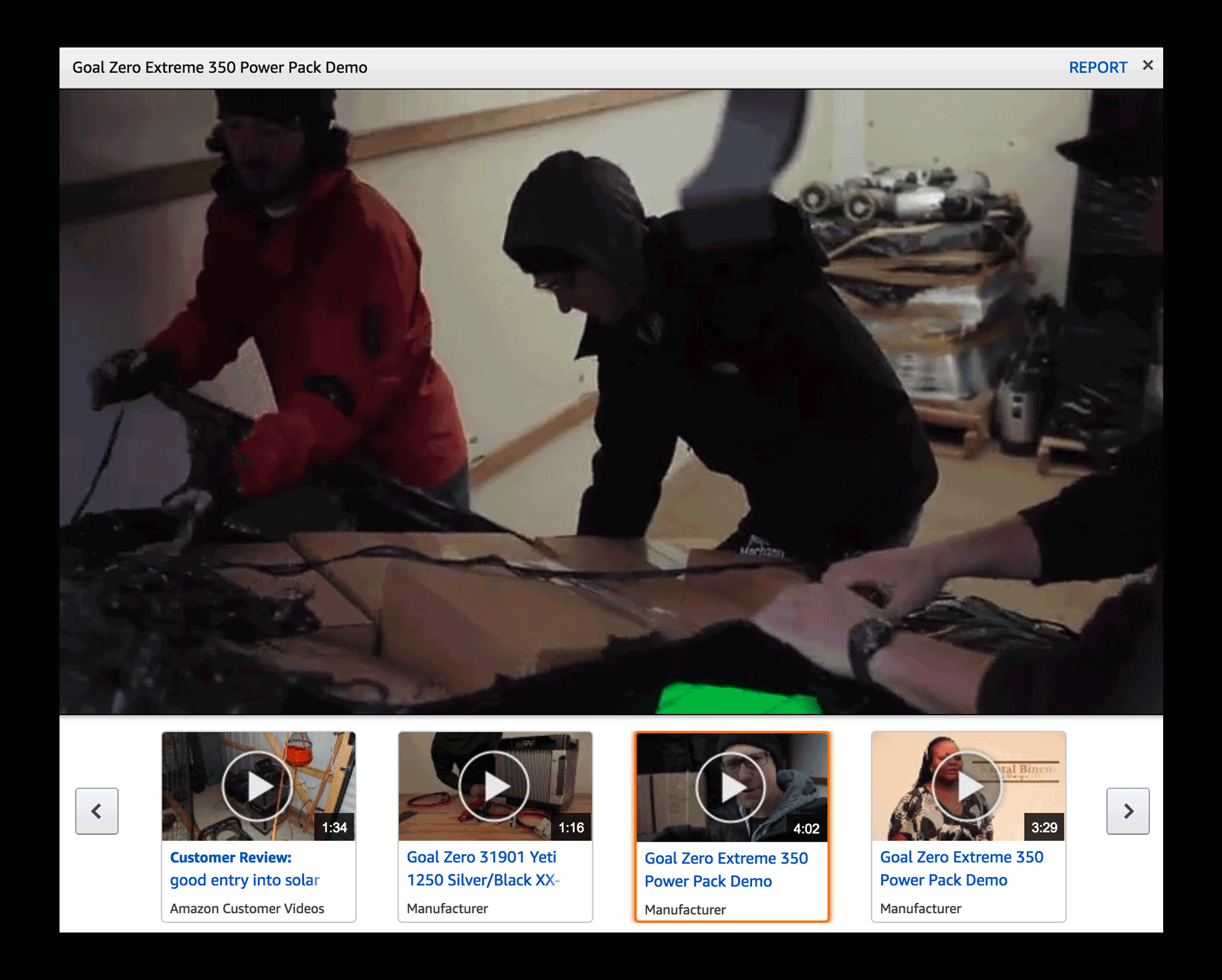
FROM THE VIDEO DETAIL PAGE
User searches for a video via the Video Short portal. Clicking on the video opens the lightbox that contains all the information about the video.
- Modal.
- Related products.
- Related videos.
- Report content (different location).
- Social media sharing (different location).

FOR NOW AND FUTURE
What features users like to have for navigating and watching videos when they are in the lightbox control.
- Video player.
- Video title.
- by Whom?
- Related videos.
- Social media sharing.
- Report content.
Based on customer feedback, it is clear that we need to keep the viewing and discovering experience consisted of the customer. The challenge resides in how to show a consisted view based on the type of information displayed.
As we have described above, the lightbox might contain different types of data based on the entry point. How can we solve this challenge?
solution
ONE LIGHTBOX TO RULE THEM ALL
CONSISTENCY WITHIN THE WATCHING EXPERIENCE
Users will learn faster how to use the design. Having inconsistent interface is like trying to communicate with the user in several languages.
Consistency eliminates confusion. When the user feels confused the next step is to feel frustration.
"Blocks"
The idea consists of having a canvas where blocks of information can be shown and move around based on what we want to present to the customers. For instance, the video player, including all its information becomes a block. Then, the related video section shows a different block and so on.
Consistency saves money and time!
Consistent design is frequently built by predefined components. This allows designers and stakeholders to make decisions quickly without spending precious time to argue. This saves time that can be used to build the product and make incremental improvements.
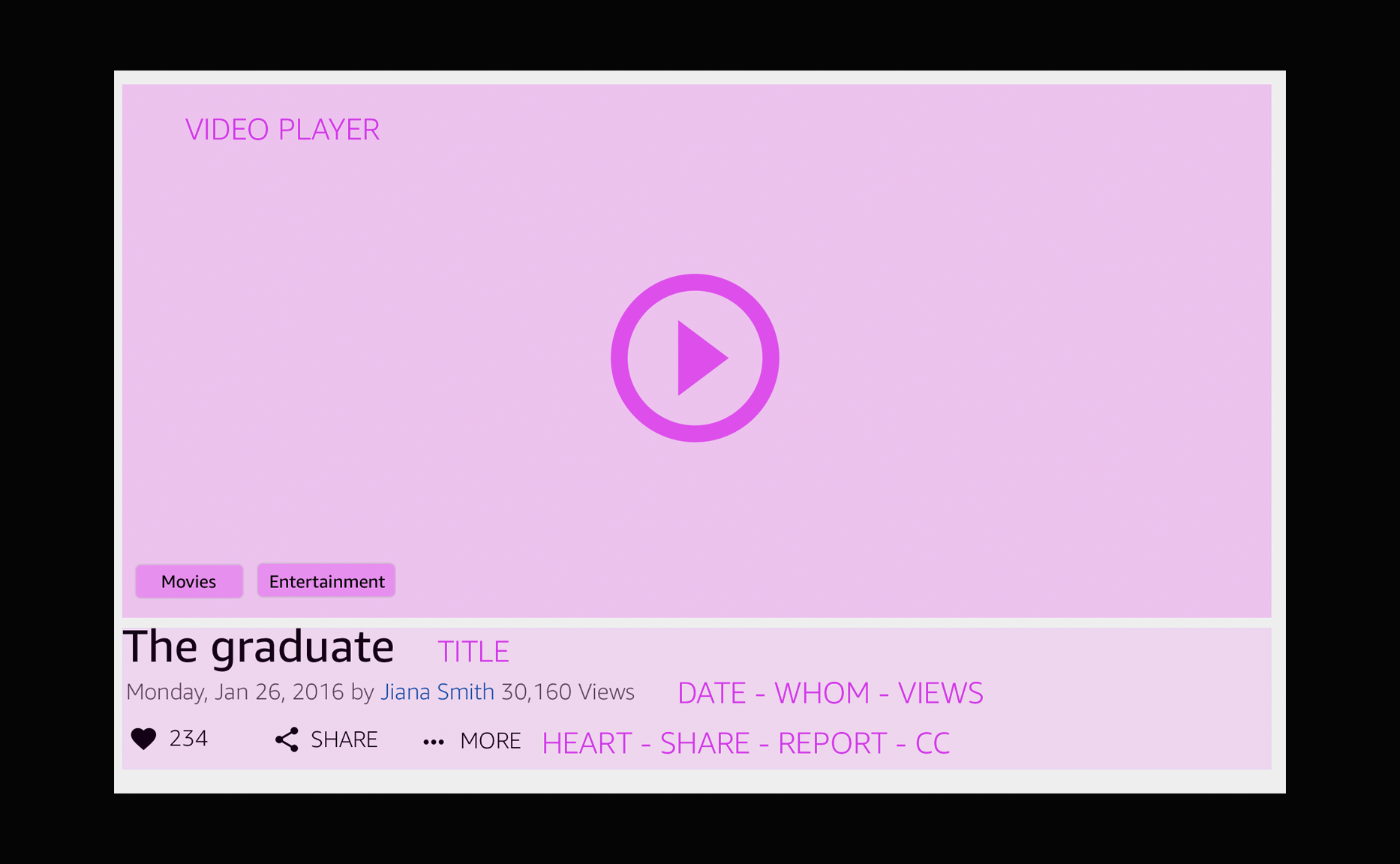
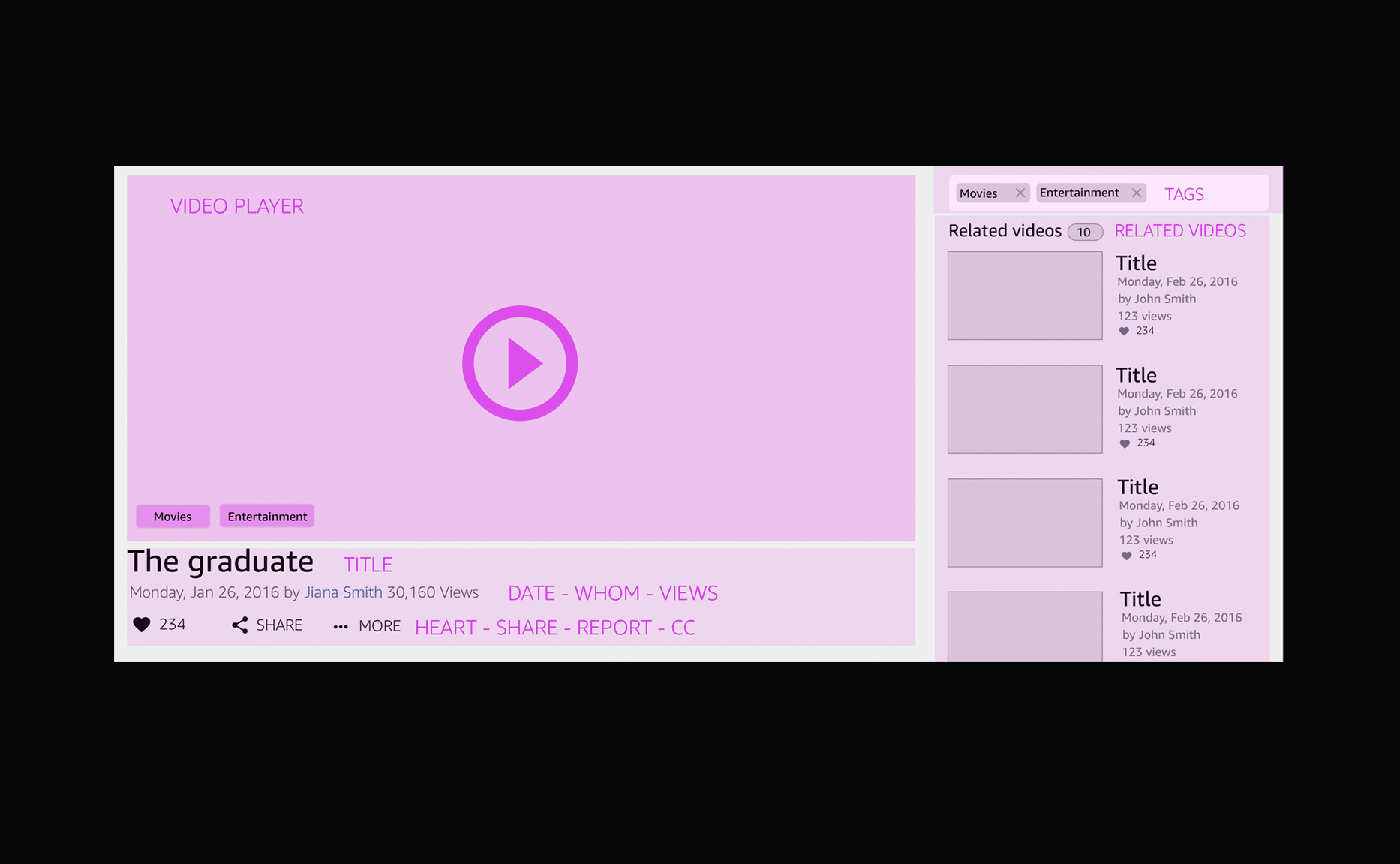
Exploration
The first iteration did not include bigger changes from the original. That was not thinking big for me. Keeping almost the same experience will not address the current issue regarding the number of videos versus the number of products displayed on the lightbox. There are more videos to show to customers than articles. As a result, users have a reduced overview of the videos we are presenting. Navigation and exploring increase so video engagement is minimum.
We have to remember that the users are coming to this lightbox after selecting a video. Customers were asking for video information rather than products. In addition, base on web standards, videos usually are positioned on the left side of the lightbox for easier discoverability.
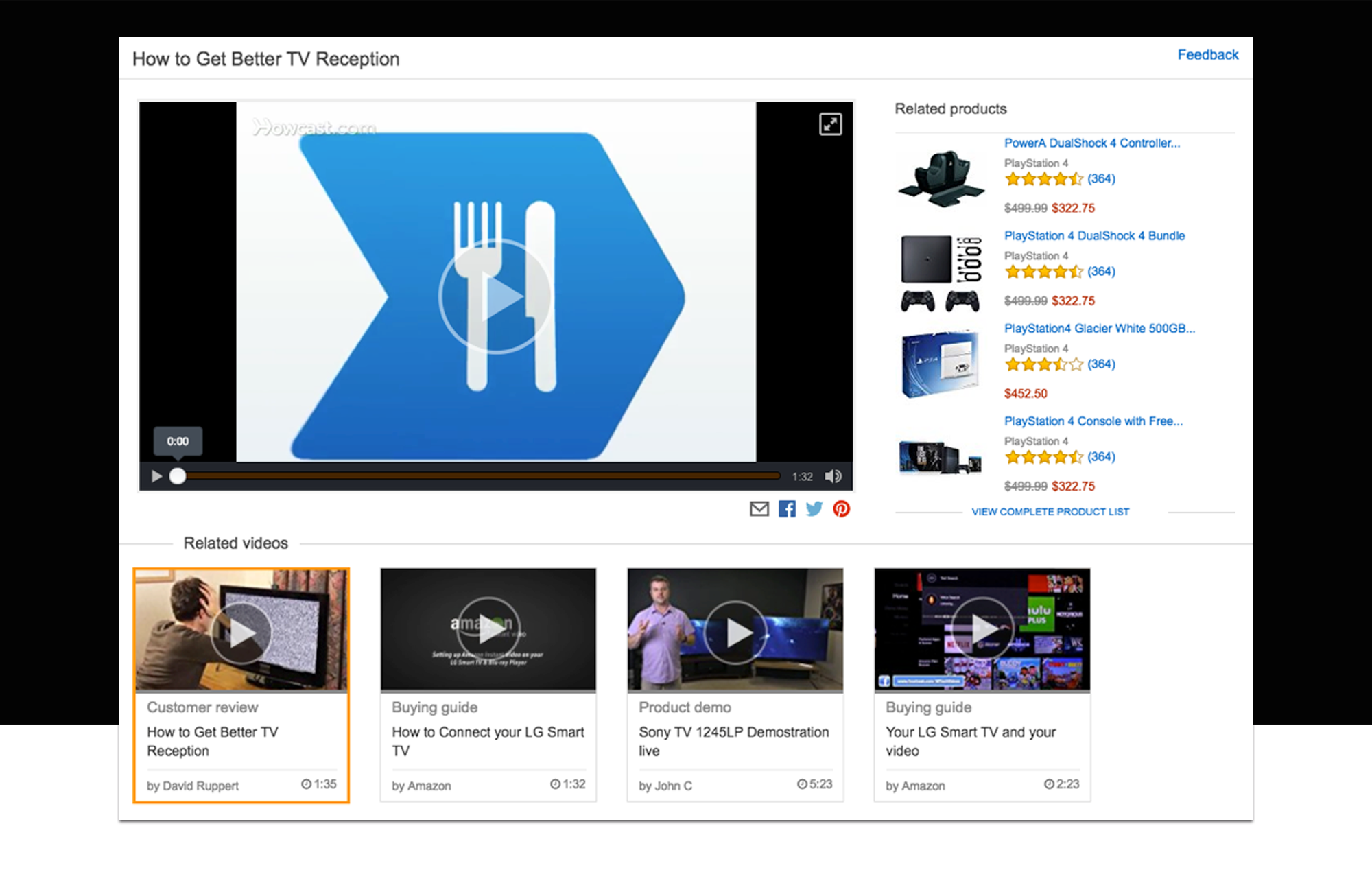
“Prototyping was the most effective way to gain meaningful feedback…”
PROTOTYPE
The HTML prototype (click on any video to open lightbox) exposed usability issues straight away and avoided natural omissions that are often made when wireframing. The process, as a whole, was becoming less time consuming because small changes weren't taking hours to rectify and the code was completely re-usable when it came to the production stage.
If you're building a prototype for the web, it makes sense to build it in its natural environment as it provides as real an experience as you can hope to achieve. Understanding how to build your designs can also give you a greater affinity with developers; they'll be more open to your ideas and able to communicate theirs better too.
It also has the benefit that you can take full advantage of all the web has to offer. Your prototype can adapt to the width of the browser window but a graphic wireframe can't. This is useful when demonstrating how your site adapts at different screen widths.
evaluate
From the beginning of the project, I was focusing my work trying to understand the necessities of our customers. We conducted several tests to gather data regarding how users navigate and search for videos. The feedback obtained helped us decide between the different concepts that I was proposing.
We tested the new UI with five participants, looking for usability problems. We also talked to participants about what they would use video results for, looking for what kind of functionality is needed to solve the users’ real problems.
We tested the new UI with five participants, looking for usability problems. We also talked to participants about what they would use video results for, looking for what kind of functionality is needed to solve the users’ real problems.
The Result
Introducing the New Experience
New design shipped in December 2017
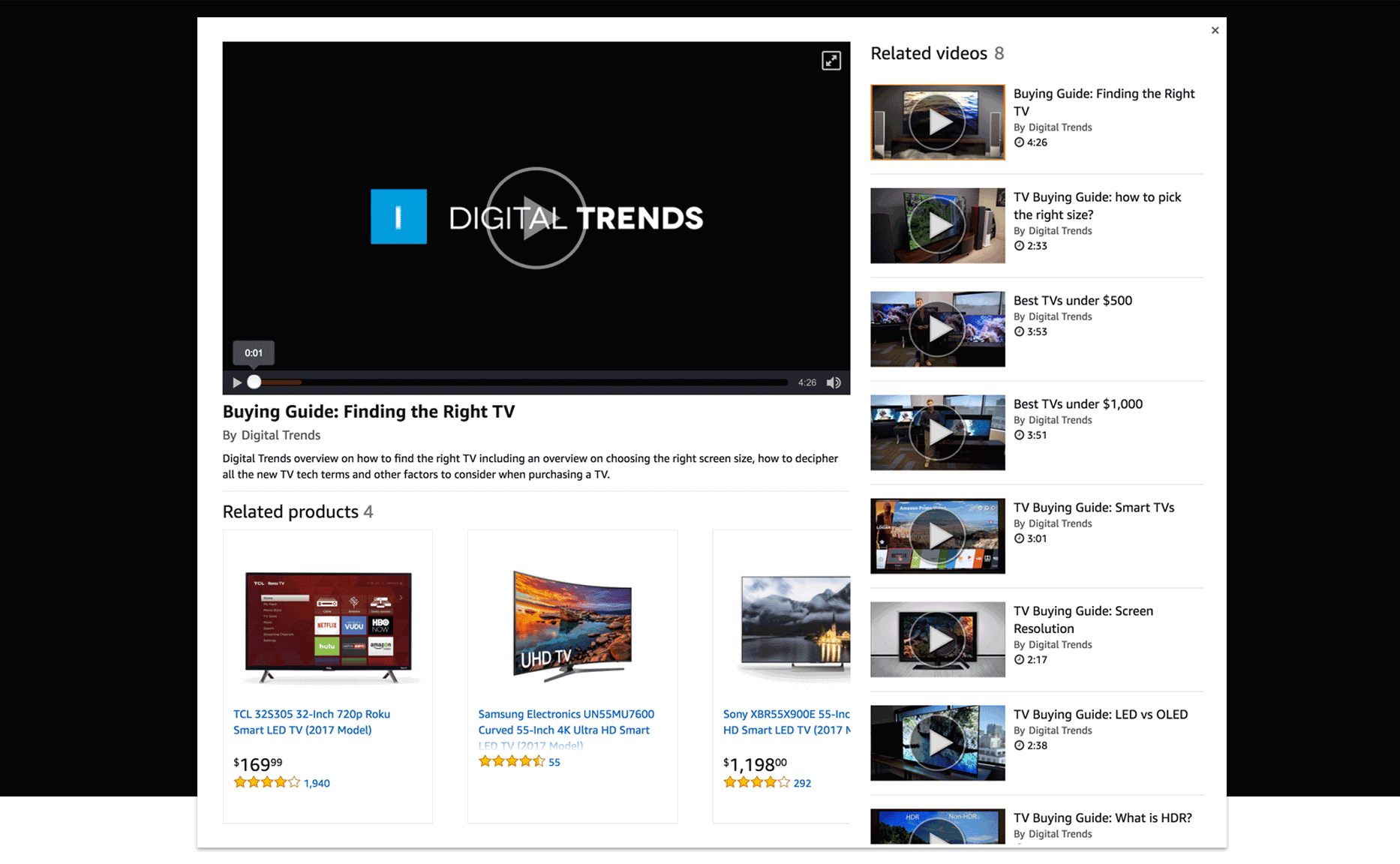
The design follows the standards used on other video platforms. I wanted to keep the new experience consisted of other models. The video player is centered on the lightbox and the navigation panel located to its right.
The section below can be used to show different types of information according to the necessity. For example, it can show the related products associated with the video.
The completion of this project helped me understand and learn more about how to work with other organizations within the company. One thing that I had to put into practice constantly consisted of challenging decisions when other stakeholders disagree. One example includes the location of the “Related products” on the Lightbox. On one side we were pushed to locate the product on the right side of the UI.
The search team conclusion consisted of keeping the old experience as it was. However, thinking big alllowed me to convice the team otherwise. My reason states that the amount of videos is larger than the list of the related products. As a result, the location of the videos on the side allows us to display a bigger example of related videos with an easier up and down scrolling navigation. The current issue with the former experience consisted of the amount of real state wasted when presenting less product than videos.
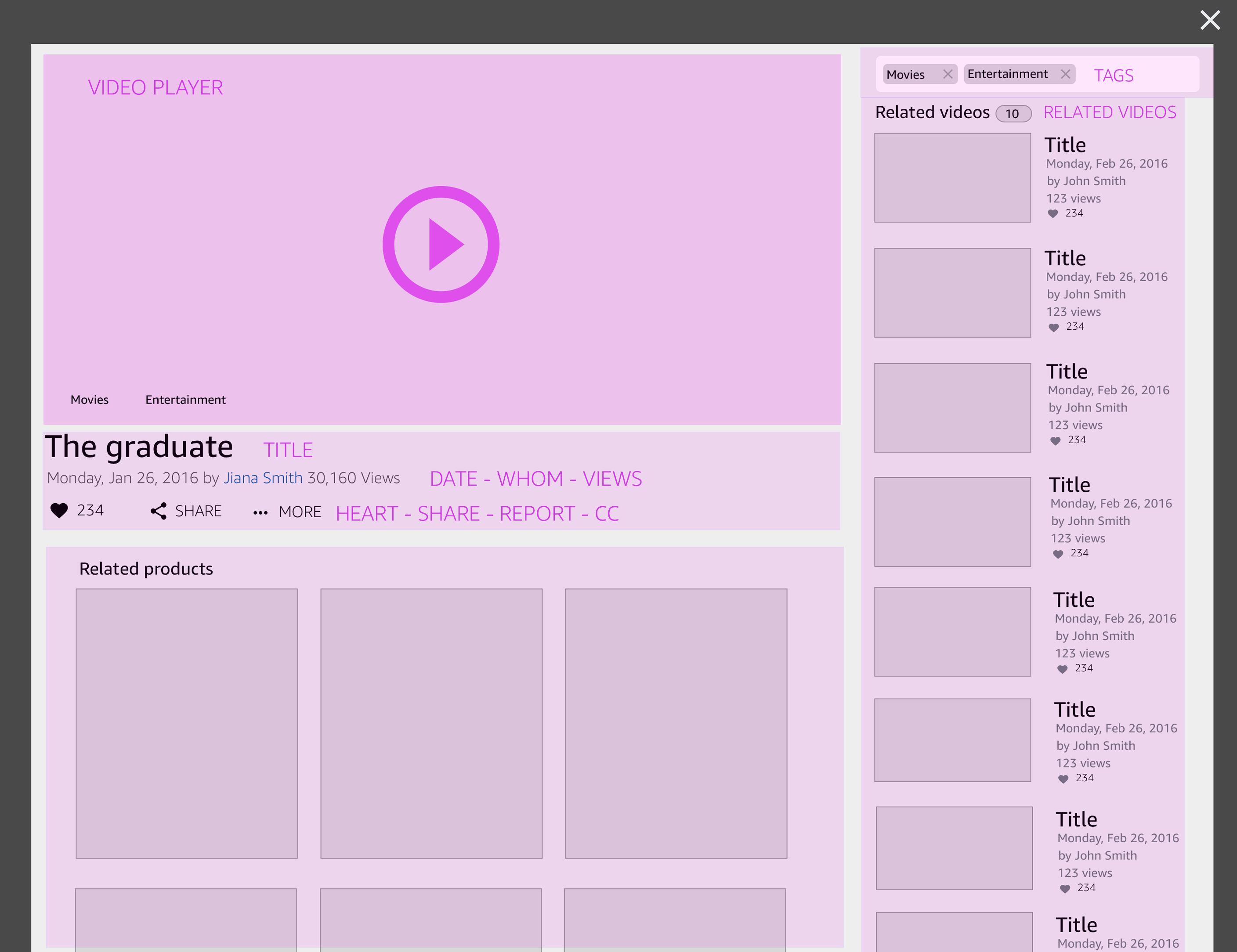
THE IMPACT
Positive results and much more to do
The new lightbox experience has had a positive impact on the search experience. The viewing rate has been significantly increased which means customers are starting to watch videos related to products while searching.